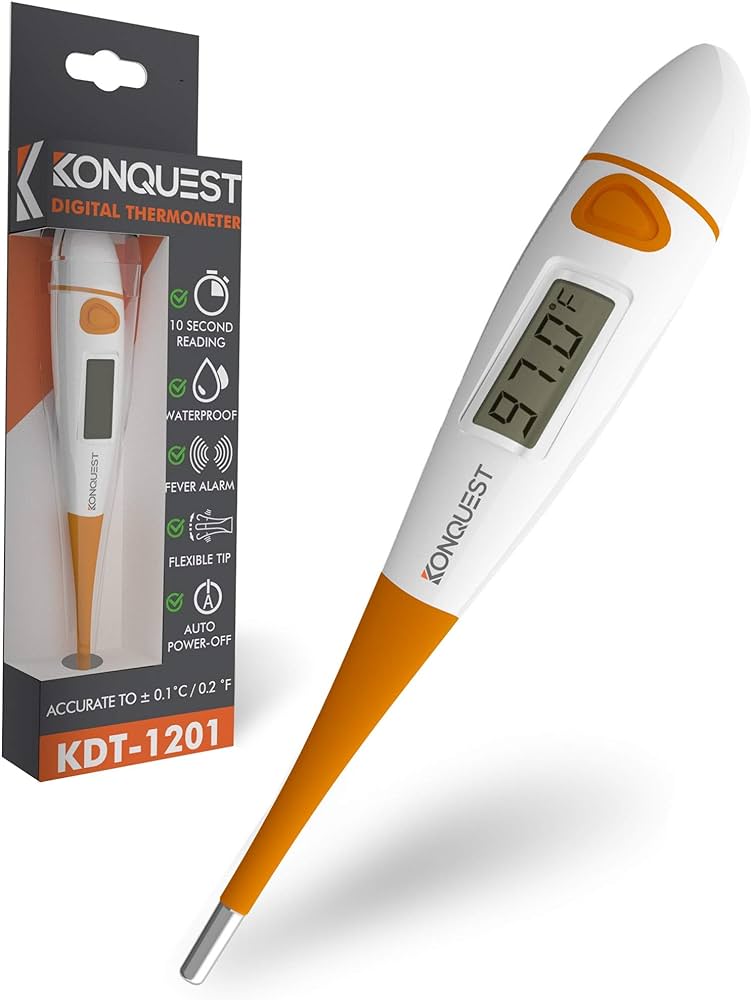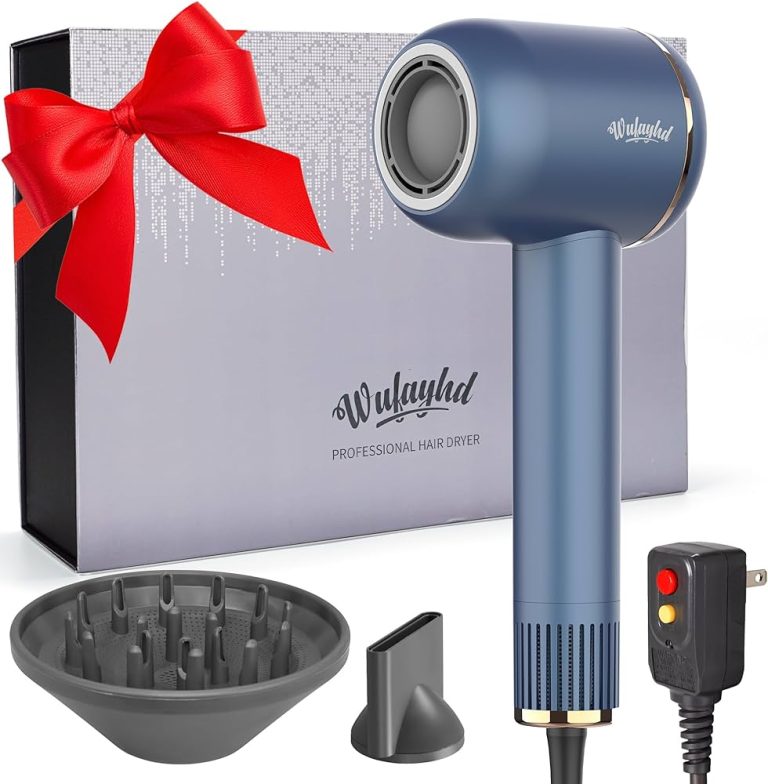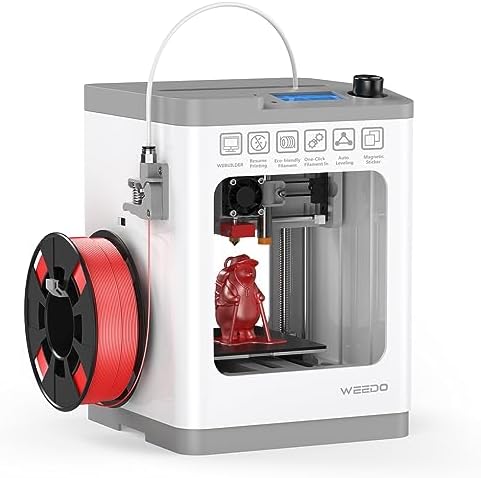9 Best Thermometers for Infants: Accurate, Safe, and Easy-to-Use Options
When your baby has a fever, you need a reliable thermometer to get accurate readings quickly. Choosing the right thermometer for your infant can be overwhelming with so many options available. From digital stick thermometers to infrared forehead models, each type has its pros and cons.
In this guide, we’ve done the research for you and compiled a list of the nine best thermometers for infants. Whether you’re looking for ease of use, accuracy, or additional features, you’ll find the perfect match for your needs. Let’s dive in and help you make an informed decision to keep your little one safe and healthy.
Factor 1: Safety Features
When choosing a thermometer for your infant, safety features are paramount. Prioritize options that minimize risks and ensure a comfortable experience for your baby.
Avoiding Glass and Mercury
Select thermometers free of glass and mercury to avoid dangerous breakages and toxic exposure. Digital thermometers are a safer choice because they don’t contain these hazardous materials. Options like digital stick and infrared models offer accurate readings without the risk associated with traditional glass thermometers.
Comfortable Probe Design
Opt for a thermometer with a comfortable probe design, as it ensures a smoother experience for your infant. Flexible tips and soft silicone materials are excellent for reducing discomfort during temperature checks. Ear thermometers with gentle, ergonomic tips provide accurate readings without causing distress to your baby.
Factor 2: Ease of Use
When choosing a thermometer for your infant, ease of use is crucial. You’ll want a device that’s user-friendly and efficient, especially during stressful moments.
Quick Read Features
Choose thermometers with quick read features to minimize the time you spend taking your baby’s temperature. Many digital and infrared thermometers can deliver readings in just a few seconds, ensuring your infant stays comfortable and less agitated. Look for models that promise results within 2-3 seconds.
Backlit Display for Nighttime Use
Select a thermometer with a backlit display for easy nighttime use. This feature allows you to take your baby’s temperature without turning on bright lights, which helps keep them calm and sleepy. Many advanced models offer a soft, illuminated screen for readouts even in dim conditions.
Factor 3: Method of Measurement
It’s essential to consider how the thermometer measures temperature to ensure accuracy and comfort for your infant.
Rectal Thermometers
Rectal thermometers offer the most precise readings, making them ideal for infants. You insert them into your baby’s rectum, which can be uncomfortable but provides reliable results. Many pediatricians recommend this method for newborns.
Ear Thermometers
Ear thermometers, also called tympanic thermometers, measure the temperature inside your baby’s ear canal. They’re quick and less invasive than rectal thermometers. However, they might not be suitable for newborns or infants with smaller ear canals, as they can be less accurate.
Forehead Thermometers
Forehead thermometers, or temporal artery thermometers, are non-invasive and easy to use. You simply swipe or place them across your baby’s forehead. They’re great for quick checks, especially when your baby is sleeping, but they may be slightly less accurate than rectal thermometers.
Oral Thermometers
Oral thermometers require your baby to hold the device under their tongue. This method is more suitable for older infants or toddlers who can follow instructions. While they provide good accuracy, they’re not the best option for younger infants due to the required cooperation.
Factor 4: Age Appropriateness
Choosing the right thermometer depends on your infant’s age. Different models suit different age groups better, ensuring both accuracy and comfort.
Recommendations for Newborns
Opt for rectal thermometers for newborns due to their precision. These thermometers provide the most accurate readings, which is crucial for infants under 3 months. Make sure the probe is flexible and comes with a wide base to prevent over-insertion. Infrared forehead thermometers can also be suitable since they offer a non-invasive way to measure temperature. Ensure the model includes a gentle mode to avoid discomfort.
Best Options for Older Infants
Consider ear thermometers for infants aged 6 months and above. These thermometers are quick and minimally invasive, making them ideal for a squirmy baby. Choose models with small, soft probe tips suitable for tiny ear canals. Digital stick thermometers, usable under the armpit, are also great for older infants. Look for models with easy-to-read displays and fever indicators to simplify the process.
Factor 5: Accuracy and Reliability
Choosing a thermometer that’s both accurate and reliable is crucial for monitoring your infant’s health. Look for features ensuring precision and consistency in every reading.
Clinical Accuracy
Select a thermometer tested for clinical accuracy. These typically meet standards set by health organizations. Digital stick and rectal thermometers often provide the highest level of precision (±0.2°F). Infrared thermometers, such as forehead and ear types, are also accurate but can be sensitive to positioning. Always check for FDA approval or similar certifications to ensure reliability.
Consistency of Readings
Ensure the thermometer delivers consistent readings. This means you should get similar results when taking multiple measurements under the same conditions. Digital models usually excel in this aspect. Frontal and ear thermometers might require practice to perfect positioning, helping maintain consistency. Consistent readings give you confidence in tracking your infant’s temperature over time, providing peace of mind.
Factor 6: Additional Features
When choosing a thermometer for your infant, considering the additional features can enhance your experience and ensure effective temperature monitoring.
Fever Alerts
Look for thermometers with built-in fever alerts. These typically use a beep or color change to indicate a fever, making it easier to identify if your infant’s temperature is problematic quickly. For instance, some models light up red for fever and green for normal temperatures, offering a visual cue that’s hard to miss.
Memory Functions
Opt for thermometers with memory functions that store previous readings. This feature allows you to track your infant’s temperature trend over time without manual effort. For example, a thermometer that saves 10 or more readings can help you present accurate data to healthcare providers, ensuring better management of your infant’s health.
Review of the 9 Best Thermometers for Infants
Options for Each Type of Measurement
Finding the perfect thermometer for your infant can feel overwhelming. Here are the best options for each type of measurement:
- Rectal Thermometers
- Vicks Baby Rectal Thermometer: Designed with a short probe for safety and a large digital display for easy reading.
- FridaBaby Quick-Read Rectal Thermometer: Provides a 10-second readout and an ergonomic design for comfort.
- Infrared Forehead Thermometers
- iHealth No-Touch Forehead Thermometer: Offers a non-invasive reading in one second, with tri-point sensors for accuracy.
- Braun No Touch & Forehead Thermometer: Features a dual-mode setup allowing touch and no-touch readings.
- Ear Thermometers
- Braun ThermoScan 7 Ear Thermometer: Includes age precision technology to adjust fever guidance based on your child’s age.
- Kinsa Smart Ear Thermometer: Connects to your smartphone, delivering instant, accurate readings and tracking through an app.
- Digital Stick Thermometers
- iProven DMT-489: Utilizes dual-mode readings for both forehead and ear with a flexible tip for comfort.
- Safety 1st Rapid Read Thermometer: Affords a 8-second accurate reading, great for restless infants.
- Pacifier Thermometers
- Philips Avent Digital Pacifier Thermometer: Combines pacifier comfort with digital reading convenience.
- Brother Max 3-in-1 Digital Thermometer: Doubles as a pacifier with a memory function to track temperature changes.
Pros and Cons of Each Thermometer
Understanding the advantages and limitations of each thermometer helps you make an informed choice.
- Vicks Baby Rectal Thermometer
- Pros: Highly accurate, fast readout.
- Cons: Invasive, may cause discomfort.
- FridaBaby Quick-Read Rectal Thermometer
- Pros: Ergonomic, precise, quick.
- Cons: Discomfort, invasive nature.
- iHealth No-Touch Forehead Thermometer
- Pros: Non-invasive, swift readings.
- Cons: Requires correct positioning, costly.
- Braun No Touch & Forehead Thermometer
- Pros: Versatile with dual modes, easy-to-use.
- Cons: Expensive, batteries needed.
- Braun ThermoScan 7 Ear Thermometer
- Pros: Age-based guides, accurate.
- Cons: Higher cost, probe covers required.
- Kinsa Smart Ear Thermometer
- Pros: App connectivity,
Tips for Using Thermometers on Infants
Using thermometers correctly can ensure you get accurate readings and keep your infant safe. Here are some tips to help you use different types of thermometers and maintain them properly.
Correct Usage for Different Types
Rectal Thermometer: Always use a rectal thermometer for infants under three months for the most accurate readings. Lubricate the tip with petroleum jelly, insert it gently about half an inch, and keep your baby still for the recommended duration.
Infrared Forehead Thermometer: Place the sensor directly on the forehead’s center, ensuring there’s no sweat or dirt obstructing the reading. Hold it steady until the device beeps, signaling the temperature’s been recorded.
Ear Thermometer: Make sure the ear is free of earwax as it can affect the reading. Insert the thermometer gently into the ear canal without forcing it and hold it in place until the reading is complete.
Digital Stick Thermometer: Use this type either orally (for older infants) or under the armpit. For oral use, place the thermometer under the tongue and ensure your child doesn’t bite it. For armpit usage, make sure it’s in direct contact with the skin and not the clothing.
Pacifier Thermometer: Allow your baby to suck on it like a regular pacifier. Ensure they keep it in their mouth without removing it for a reliable reading.
Cleaning and Maintenance
Regular Cleaning: Clean the thermometer before and after each use with rubbing alcohol or soap and water. Avoid immersing electronic parts in water to prevent damage.
Proper Storage: Store thermometers in a clean, dry case when not in use. Keep them away from moisture and extreme temperatures to maintain accuracy.
Battery Check: Regularly check and replace the batteries in digital thermometers to ensure they power on and provide accurate readings.
Calibration: Periodically calibrate your thermometer as instructed by the manufacturer to maintain its accuracy over time.
Conclusion
Choosing the right thermometer for your infant doesn’t have to be overwhelming. By considering factors like safety features and age-appropriate options, you can find a reliable thermometer that meets your needs. Whether you prefer rectal, infrared forehead, ear, digital stick, or pacifier thermometers, there are excellent models available with features tailored for quick and accurate readings.
Remember to follow the proper usage techniques and maintenance practices to ensure the longevity and accuracy of your thermometer. Investing in a quality thermometer now will give you peace of mind and help you effectively monitor your baby’s health.






